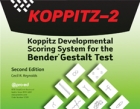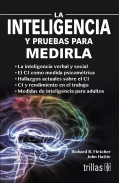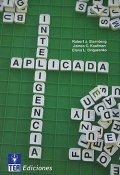- Cuadernos para adultos
- Educación
- Educación artística
- Educación especial/NEE
- Educación física
- Diccionarios
- Escuela
- Estimulación precoz
- Guías para padres
- Infantil y juvenil
- Libros de juegos y actividades
- Lingüística
- Logopedia
- Pedagogía
- Pruebas y protocolos
- Psicología
- Refuerzo escolar
- Salud
- Sociología
- Temas de autoayuda
- Terapias complementarias
- Tercera edad
- Promociones
REGISTRO
KOPPITZ-2: Koppitz Developmental Scoring System for the Bender Gestalt Test–Second Edition (con tarjetas Bender) (C*)
Cecil R. Reynolds
The revision of Elizabeth Koppitz’ Bender-Gestalt test scoring system is now available. One of the most frequently used psychological tests of the last century has been extensively revised and updated for today’s applications to your practice.
The new KOPPITZ–2 has been expanded to cover a broad age range with additional designs and a revised scoring system to add reliability at all levels. For the first time, the Koppitz Developmental Scoring System has been normed on a nationally stratified, census matched sample of children and adults from throughout the United States.
The new KOPPITZ–2 is ideal for use by psychologists, educational diagnosticians, licensed professional counselors, OTs, and others with proper training in the use of psychologically based tests of visual-motor integration. It is a highly reliable, valid measure of visual-motor integration skills that applies the developmental approach to scoring made so popular by its originator, Dr. Elizabeth Munsterberg Koppitz. The new KOPPITZ–2 is true to Koppitz’ original conceptualization but has been redeveloped to meet current psychometric standards. The age range has been extended to allow the evaluation of special education students through age 21 and to assist in the evaluation of the visual-motor integration deficits of the growing population of seniors. For older children and adults, both 2 and 3 dimensional drawings are now required that reveal subtle deficits in visual-motor integration processes.
The Bender-Gestalt Test has long been one of the most frequently administered of all psychological tests. The Koppitz scoring system, with long outdated norms from the 1960s remained popular for 40 years due to its contribution to clinical assessment of individual children. The original Koppitz scoring system was used in more than 500 published research studies on children with visual-motor integration problems, brain injury, learning problems, and various forms of emotional disturbance. This revision remains true to Dr. Koppitz’ original views of the drawing of the Bender-Gestalt figures and the reduction in errors in the execution of these drawings as a true developmental phenomenon. The figures are derived from theories of Gestalt psychology.
The KOPPITZ–2 requires the examinee to draw increasingly complex figures from a model (the Bender designs) on a plain sheet of white paper and to organize the task independently.
The KOPPITZ–2 assesses the ability to relate visual stimuli accurately to motor responses and to organize the drawing task independently. It does so using a less structured task than other tests of visual-motor integration, thereby providing a more ecologically sound approach to assessment of visual-motor integration skills relative to highly structured drawing tasks.
Use the KOPPITZ–2 to:
determine the presence and degree of any extant visual-motor problems
identify candidates for remedial programs and visual-motor training
evaluate the effectiveness of intervention programs and monitoring recovery following acute injury
monitor the progress of progressive degenerative disease processes that affect visual-motor integration skills
gather research regarding the visual-motor integration process
A special chapter of the Manual is devoted to the Koppitz Emotional Indicators (EIs) and their proper use. A specialized scoring form is provided just for this purpose to make scoring of the Koppitz EIs easy and objective but also to maintain them as a separate record from the Developmental Scoring System.
Edad: 5 a 85 años
Tiempo: 5-10 minutos
Administración: Individual
C*. Para la venta de este producto se requiere acreditar: Grado o licenciatura en Psicología, Psicopedagogía, Psiquiatría o un campo estrechamente relacionado con el propósito de evaluación.
Examiner's Manual
Bender Gestalt II Stimulus Cards
25 Examiner Record Forms Ages 5-7
25 Examiner Record Forms Ages 8-85+
25 Emotional Indicator Record Forms
Scoring Template
G R A T I S
TIENDA

-
El CI ha sido probablemente uno de los temas más apasionantes y más ampliamente investigados. Sin embargo, es un asunto controvert...24.40 €
-
Prueba manipulativa basada en una serie de cubos, diseñada con el propósito de evaluar la capacidad de un sujeto para integrar des...141.77 €
-
En este libro encontrará un programa de desarrollo de la inteligencia basado en la perspectiva de la teoría de la inteligencia exi...52.23 €
-
Esta Batería, basada en la teoría de las tres inteligencias de Sternberg, proporciona la información pertinente, necesaria y sufic...540.00 €


















